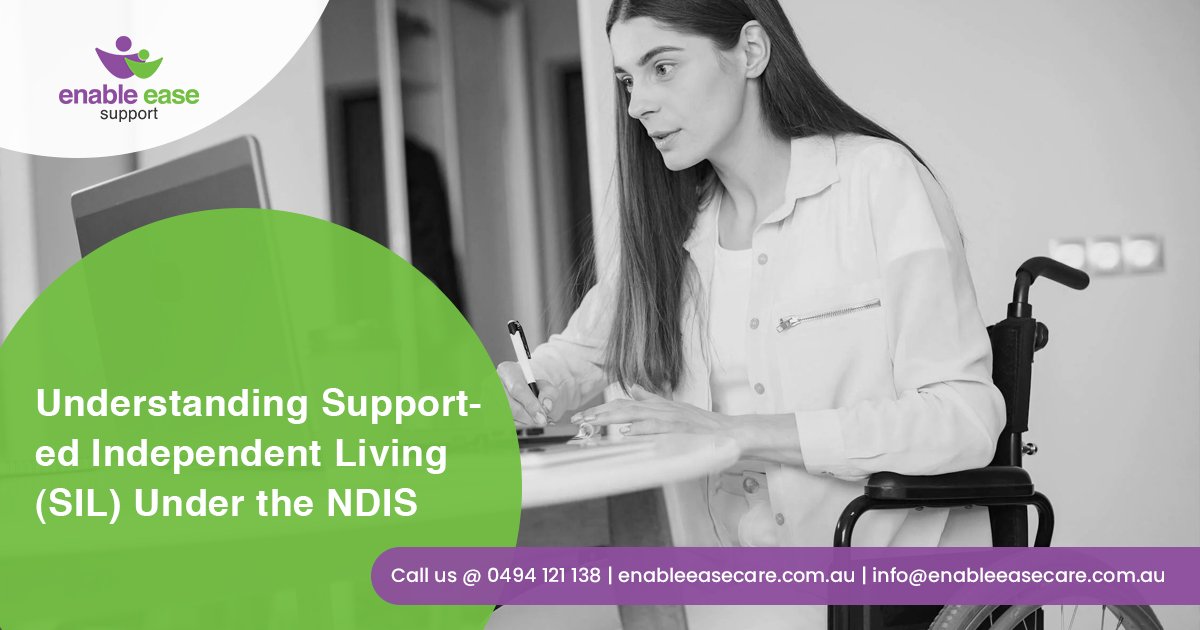Introduction
Supported Independent Living, commonly known as SIL, is one of the core support services funded by the National Disability Insurance Scheme (NDIS). It is designed to help individuals with disabilities live as independently as possible, either in shared housing or on their own, with the right level of day-to-day support.
Choosing the right NDIS providers is essential for receiving high-quality SIL services that align with personal goals, daily routines, and long-term needs. This guide explains how SIL works, who it’s for, and how to access this service through NDIS.
What is Supported Independent Living (SIL)?
SIL provides ongoing assistance with daily tasks for individuals living in a home environment. It is ideal for people with higher support needs who want to live independently, usually in shared accommodation with others who also receive support.
Key Features of SIL:
- Daily support with personal care, cooking, cleaning, and medication
- Help with developing life skills like budgeting and hygiene
- 24/7 or drop-in assistance depending on individual needs
- Support with household routines and managing appointments
- Emotional support and encouragement toward independence
SIL is funded under the NDIS Core Supports budget and must be included in an individual’s NDIS plan.
Who Is Eligible for SIL?
SIL is generally suited to individuals who:
- Have significant or complex needs requiring consistent daily support
- Want to live independently or with others in a shared home
- Are over 18 and eligible for NDIS-funded Core Supports
- Have goals in their NDIS plan that align with independent living
NDIS planners assess eligibility for SIL based on functional capacity, living goals, and current living arrangements.
How Do NDIS Providers Deliver SIL?
NDIS providers play a crucial role in delivering SIL services. They are responsible for managing support workers, ensuring service quality, and tailoring support to each participant’s needs.
What SIL Providers Do:
- Create individualised support plans
- Match participants with suitable housing options
- Coordinate daily support staff schedules
- Support life skills development
- Communicate regularly with families and carers
- Monitor participant well-being and goal progress
Choosing experienced and flexible NDIS providers ensures that individuals receive safe, respectful, and reliable care within their home environment.
Types of SIL Living Arrangements
1. Shared Accommodation
- Most common SIL setting
- Individuals live with other NDIS participants and share support
- Homes are often staffed 24/7
2. Individual Tenancies
- Suitable for those who prefer to live alone
- Support staff assist based on a set schedule
- Offers more privacy and autonomy
3. Group Homes with Onsite Support
- Larger residences designed for group living
- Staff live onsite or nearby
- Services include personal care and household help
Each arrangement is designed to match the individual’s preferences, abilities, and support needs.
What Support Services Are Included in SIL?
✅ Personal Care
- Bathing, dressing, grooming, and hygiene
- Medication reminders and assistance
✅ Meal Preparation
- Cooking meals
- Nutrition planning and grocery shopping
✅ Household Tasks
- Cleaning, laundry, and home organisation
✅ Social and Community Participation
- Encouragement to attend social events
- Help accessing activities or programs
✅ Skill Building
- Budgeting and money management
- Using public transport
- Time management and daily planning
All support is delivered by trained staff arranged by your chosen NDIS providers.
How to Access SIL Through the NDIS
Step 1: Discuss SIL in Your Planning Meeting
Talk to your NDIS planner about your desire to live independently and include SIL in your plan.
Step 2: Provide Supporting Evidence
You’ll need assessments from healthcare professionals (such as occupational therapists or psychologists) that show your support needs and how SIL will benefit you.
Step 3: Receive a SIL Quote from a Provider
Once SIL is approved, you’ll get quotes from different NDIS providers who deliver supported living services.
Step 4: Choose Your Provider and Start Your SIL Plan
Select a provider that matches your preferences, and begin receiving daily support as part of your NDIS plan.
Choosing the Right NDIS Provider for SIL
Not all providers offer the same level of service or flexibility. Consider these factors when choosing NDIS providers:
- Experience with SIL and complex needs
- Registered NDIS status and compliance
- Availability of housing in your preferred location
- Cultural sensitivity and respect for your background
- Quality of staff and training standards
- Flexibility in daily routines and scheduling
- Good communication and transparency
Meeting with different providers and asking questions will help you find a provider that best fits your needs and goals.
Benefits of Supported Independent Living
✔ Increased Independence
SIL helps individuals develop essential skills to manage their own lives.
✔ Improved Daily Routine
Consistent support makes it easier to maintain healthy habits and structure.
✔ Better Quality of Life
Participants enjoy more autonomy and participate in decisions about their care.
✔ Family Peace of Mind
Families and carers feel reassured knowing their loved one is receiving consistent, professional support.
The Future of SIL Services in Australia
SIL is evolving with improvements in accessibility, technology, and community inclusion. Future trends include:
- Smart homes equipped with assistive tech for safety and independence
- More choice and control for participants to select housemates and staff
- Improved training for support workers
- Increased focus on skill development and long-term outcomes
As SIL continues to grow, NDIS providers will need to offer more flexible and participant-driven services.
Citations
- National Disability Insurance Scheme (NDIS). “Supported Independent Living (SIL).” NDIS.gov.au
- Australian Government Department of Social Services. “Disability Accommodation Support Guidelines.” DSS.gov.au
- Disability Support Australia. “A Guide to SIL and Choosing NDIS Providers.” DisabilitySupportAustralia.org

